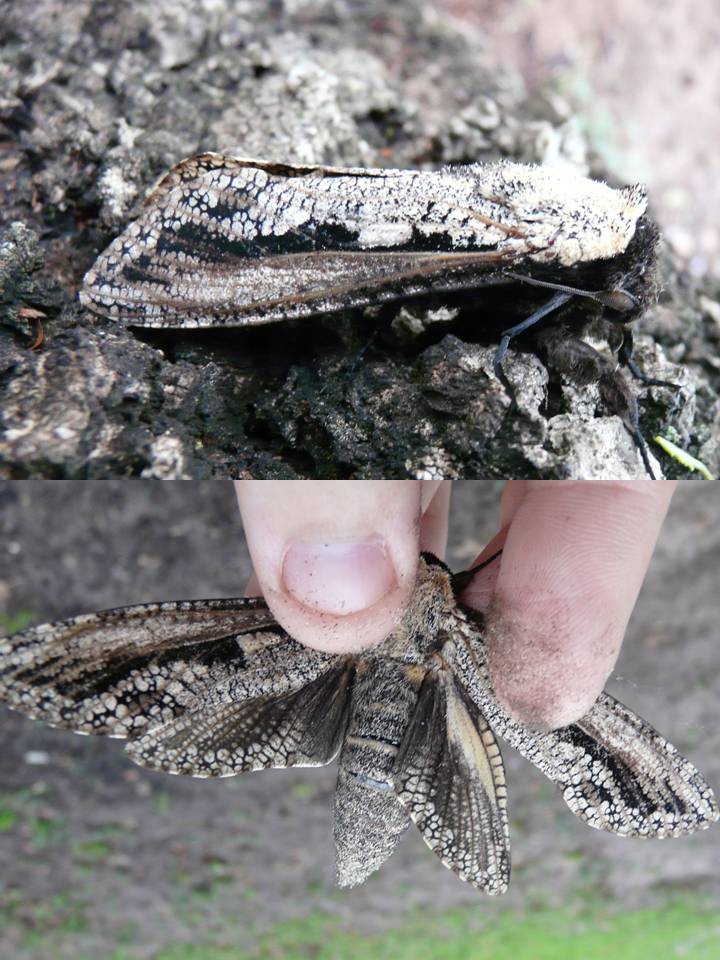

COSSIDAE - CARPENTER MOTHS
A worldwide family of medium to large moths. There are about 700 described species globally.
Characteristics
Medium to large moths often showing reticulated patternation on the wings. The ground colour of the wings is typically grey or brown and the abdomen is long. Chaetosemata are absent and external ocelli may be present or absent. Antennae are typically bipectinate but occasionally are simple, lamellate or prismatic. Proboscis short or absent, maxillary palpi minute and labial palpae of moderate length. Patagia and propatagia are protruberant on the prothorax. Epiphysis is usually present. Tibial spurs are absent or have the formula 0-2-4 or 0-2-2. Forewing vein M is strong and often forks within the cell. Vein CuP is usually present in both wings, though it is usually reduced in the hindwing. Wings are generally broader in males than females, and are coupled by a frenulum and retinaculum and by an overlap of lobes on both wings. Forewing metathoracic locking device is present. Tympanal organs are absent. Ovipositor may be long and narrow or much shorter. (Scoble 1995).
Life Cycles
Eggs vary in shape from flat to upright. The larvae are wood borers, hence the common name of Carpenter Moths, though sometimes they feed externally on roots or stems of non-woody plants. They are cylindrical with a broad head bearing large mandibles. Protothoracic plate is conspicuous. Full complement of short or rudimentary prolegs is present. Crochets arranged in an ellipse or tranverse bands and may be uni-, bi- or triordinal or arranged in a circle. Pupae are long and approximately cylindrical with two rows of abdominal spines and most abdominal segments flexible. Pupae are protruded from the larval tunnel at eclosion. (Scoble 1995).
Classification
Superfamily Cossoidea: Family Cossidae
Classification is based on wing shape and pattern and the presence of protruberant parapatagia on the prothorax.
References:
Scoble MJ 1995 - The Lepidoptera: Form, Function and Diversity - Oxford University Press, Oxford.
Click on the images to enlarge them.
Designed by Paul Smith 2006. This website is copyrighted by law.
Material contained herewith may not be used without the prior written permission of FAUNA Paraguay.
Photographs on this page were taken by Paul Smith and are used with permission.
 | FIGURE 1 |
|
FIGURE 1 - Unidentified sp. - Estancia Laguna Blanca, Departamento San Pedro (Paul Smith October 2008)

